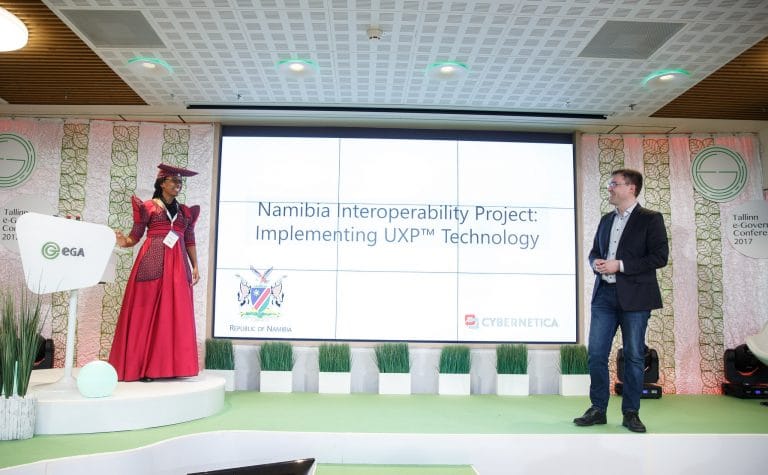
Taking stock of digital healthcare development, beyond the crisis
As social distancing is enforced in most parts of the world, the Covid-19 outbreak has already issued a concerning verdict. We might be living in the information age, but digitalization has yet to reach – whether partly or in full – key components of the way life and service provision are organized.
Naturally, healthcare jumps back into the spotlight. And after over a decade of digital transformation in this sector, we can take stock of whether the path taken is bearing fruits. But run a quick search on Google, and the first documents to come up will be mostly about trend forecasting, futuristic devices, ultra-advanced projects. Instead, we should first go back to the basics, understand what are the digital determinants of efficient healthcare, and (re)start from there.

Heiko Vainsalu. Photo by UTTV
Heiko Vainsalu has recently joined e-Governance Academy as Senior Expert on Technology. For 14 years, he has actively contributed to defining and implementing interoperability in Estonia and abroad. Drawing on his work also for the Estonian Health Insurance Fund, we rediscover the fundamentals of digital healthcare and explore their role in the current crisis.
Interoperability makes data move, not people
The ongoing pandemic is a crisis of public health and social interactions at the same time, as both are violently disrupted by the virus. But while this should be the moment where the digital fully unfolds its potential, in too many countries we are left unprepared, rushing to come up with technological solutions that could help us through these hardships.

Photo by AdobeStock
Interoperability emerges in this landscape as a core enabler of more efficient healthcare service provision. Furthermore, it is the precondition for most innovations in this sector to be truly effective. “Interoperability is relevant when digital transformation aims to tighten relationships and increase cooperation between institutional partners. Additionally, information security must also be in place. It means to configure a dedicated domain where key personnel are trained, and methodologies are applied and audited. Common end-users are not required to understand the risks related to ICT usage – which is why somebody else must take good care of it,” Vainsalu explains.
“It is not just about people knowing how to use ICTs in their field. To actually benefit from digital transformation, it is necessary to identify who should focus on interoperability and make reasonable choices. This would allow more business-oriented actors to continue improving their operations, easily accessing capabilities perfected by other organizations,” Vainsalu explains.
Digital solutions to increase readiness and efficiency
Interoperability allows information systems to seamlessly communicate with each other, and public and private actors to access relevant data whenever necessary. First as a tool through X-Road, and then as a proper organizational best practice, it is a core enabler Estonia has learned to master. Those connected to the national data exchange layer can exclusively focus on what information and services are needed. Eliminating paper work and improving the retrieval of key data, interoperability can be a valuable ally to increase healthcare organizations’ readiness to unforeseen shocks. And the current Coronavirus outbreak makes no exception.

e-Precsription is widely used in Estonia. Photo by Egert Kamenik
For example, combined with several public registries and health domain information systems, interoperability lays the basis for other e-solutions in this sector to see the light. Digital prescriptions are among the most consolidated, introduced in Estonia in 2010 and now making 99% of all prescriptions issued in the country. The Estonian solution is not about transferring documents electronically. Rather, it makes necessary information available for the parties involved as a prescription-related use case takes place. It could be patients contacting the family physician, or paying a visit to the pharmacy.
Cross-institutional cooperation is crucial to making interoperability work. However, it cannot always be taken for granted. “Since cooperation is rare to be openly formalized in legislation, we see that it is usually pretty low,” Vainsalu warns.
“During the preparatory work for e-prescriptions in Estonia, a strong policy guideline was to stick to only core business items relevant to the project. Why? Because there was no need to include ‘interoperability architecture development’ in the project; it was already set and operative. In this way, the team was able to focus on the main goal, without worrying about framing the cooperation between participants,” Vainsalu outlines.
Organizational and cultural determinants of digital healthcare
Beyond technology, boosting digital development in healthcare is not only a matter of ICTs. The most significant determinant of its success might be rather cultural than technical. “End-user understanding and trust about digital capabilities is essential. I do not mean that people should know in great detail the working principles of ICTs, and not even the latest technological developments. It should be clear to them, however, that these tools empower both users and service providers much more than the most advanced typewriter,” Vainsalu says.

Photo by Scutterstock
Often, indeed, mindset and culture present obstacles to digital adoption in healthcare. It might not even be due to trust deficits, as much as because of a certain conservatism around deep innovation still present in medical care. This might apply to doctors, patients, company CEOs – as reported in a McKinsey research, or in this long New Yorker report. However, it is here that public decision makers should take a more ambitious stance, and design governance frameworks inclusive towards health-related e-solutions.
“I believe that defining and executing a unified roadmap for all relevant healthcare and ICT organizations involved is crucial. Countries should avoid a situation where the maturity of main stakeholders in healthcare is remarkably diverse and fragmented. Otherwise, it becomes extremely difficult to introduce any change within reasonable time,” Vainsalu highlights.
Improving public health in a digital society
Core enablers and organizational changes, together, are necessary to the effective expansion of digital healthcare. In the current global crisis – where some businesses are under huge stress, while others are just waiting out the storm – relevant organizations must go beyond merely understanding what their own resources are.
“Today, we must know what external capabilities can be mobilized in the society as a whole. This is the core responsibility of interoperability, to make information available, allowing to react to the crisis with more effectiveness and flexibility. The ultimate result? Making data move, not people, and triggering an evolutionary change in the way organizations interact with each other”, Vainsalu says.

ICT tools are common in the everyday work of family doctor Dr. Eero Merilind. Photo by Ergert Kamenik
To this end, designing a fully-fledged digital society must be a priority. It is now clearer than ever before. “The current pandemic exposes the importance of information and our ability to use it. We cannot talk things through with other people in person. We have to do this remotely, while clearly understanding what information we need, and what we need to share. Sure, ICTs have been around us long enough already; but now it is time to make it work also in healthcare and public administration. As one of the main takeaways, we must learn this lesson – the closer we get to be a holistic ‘information society’, the less painful such crises will be,” Vainsalu concludes.


















